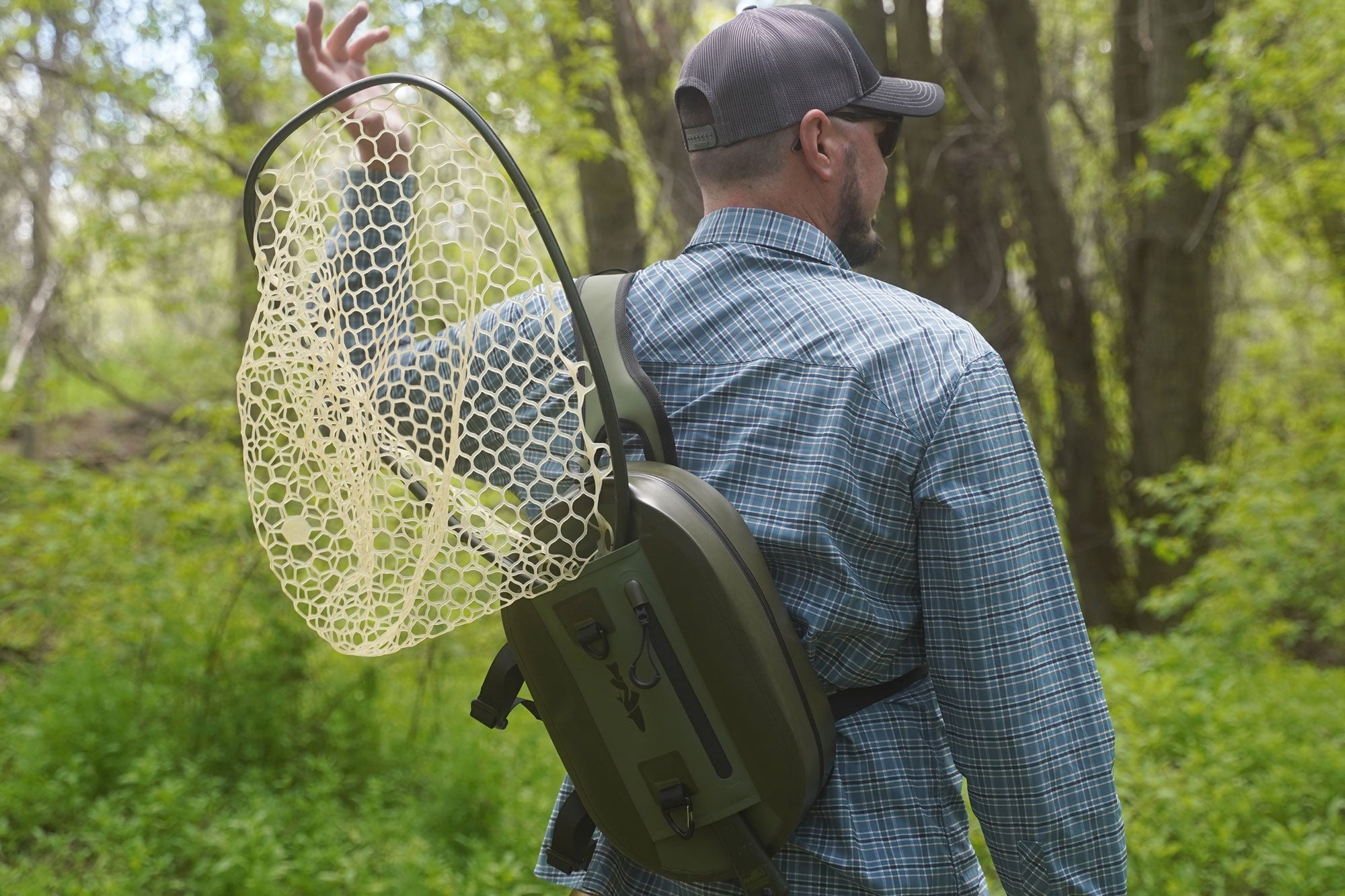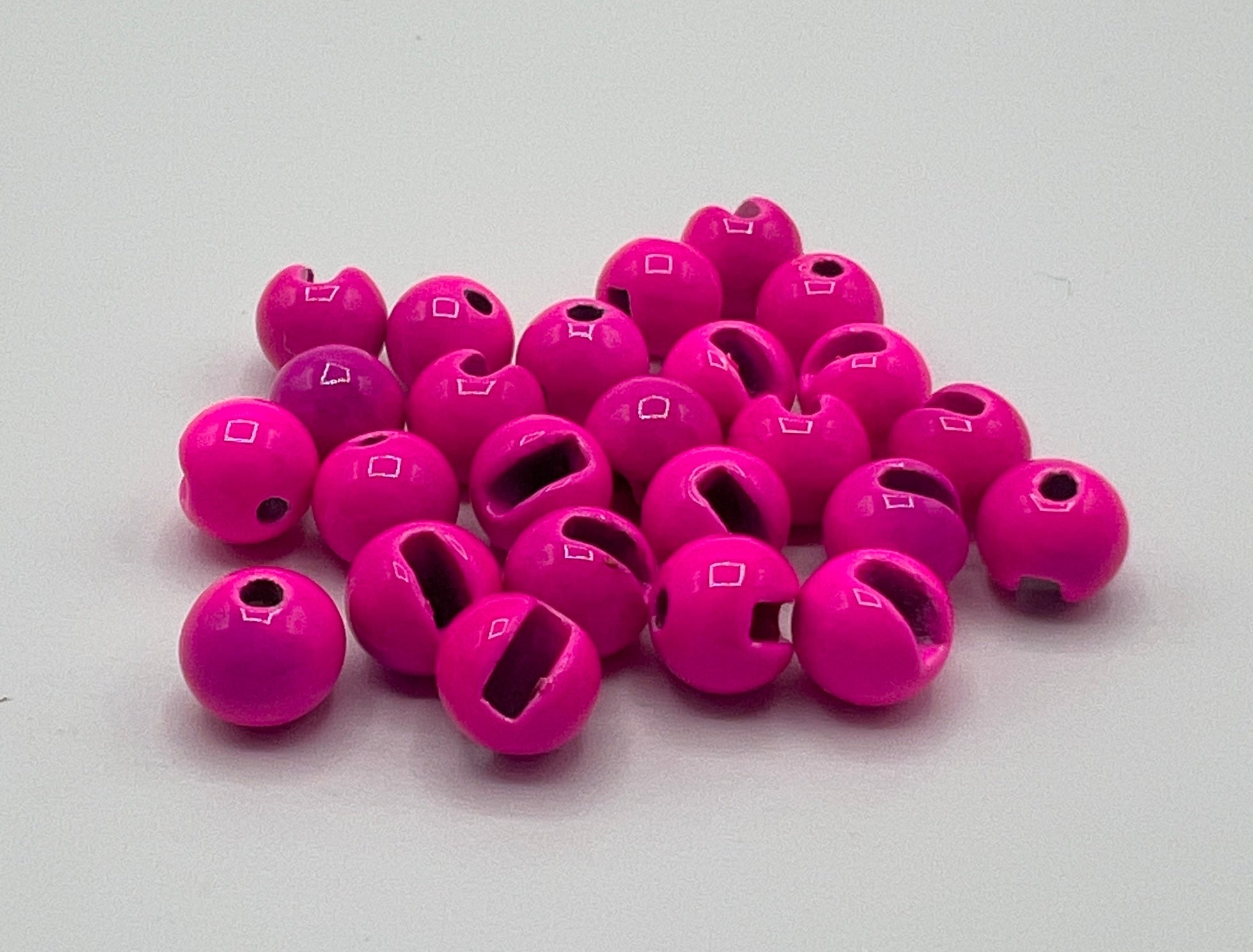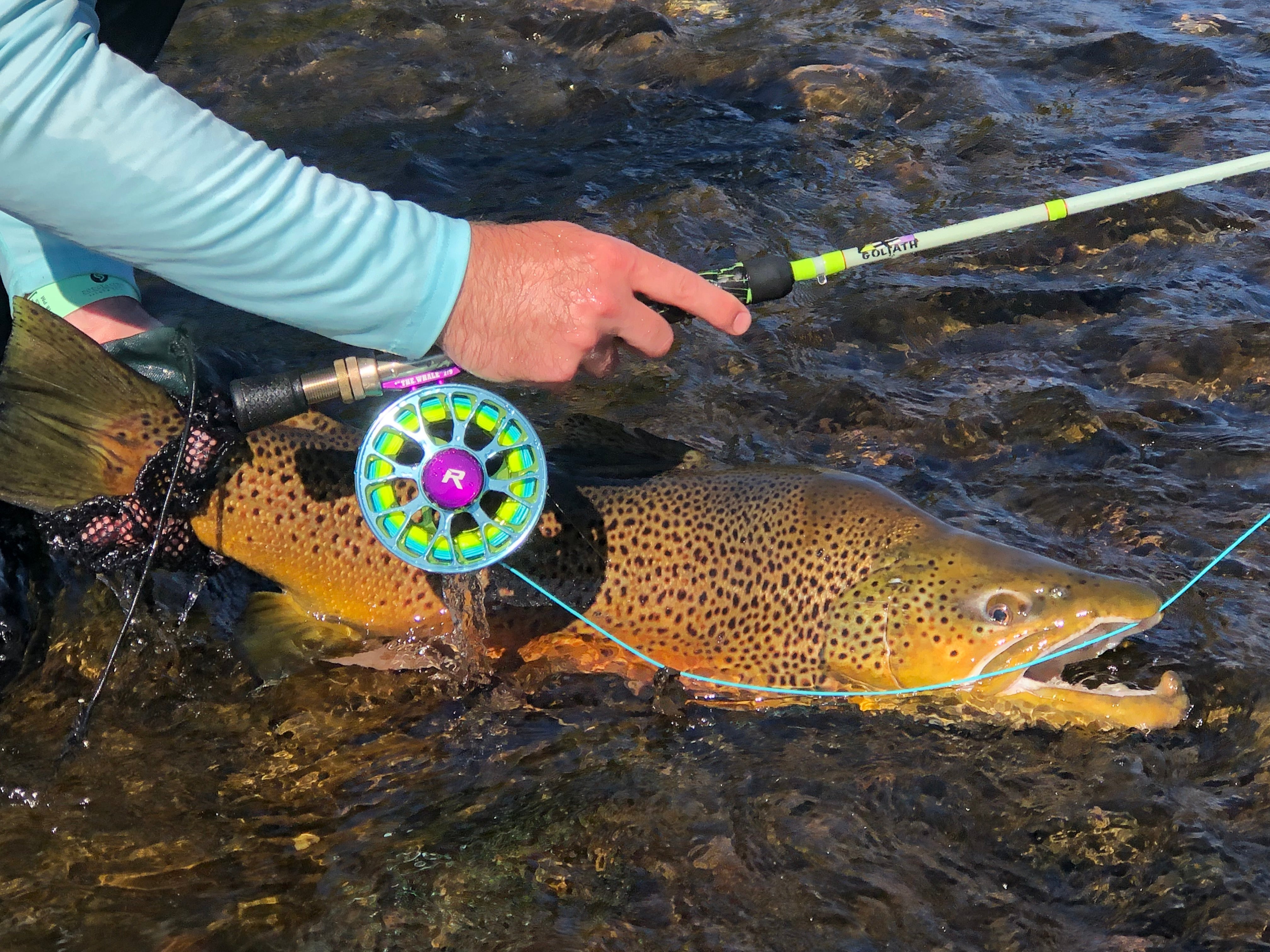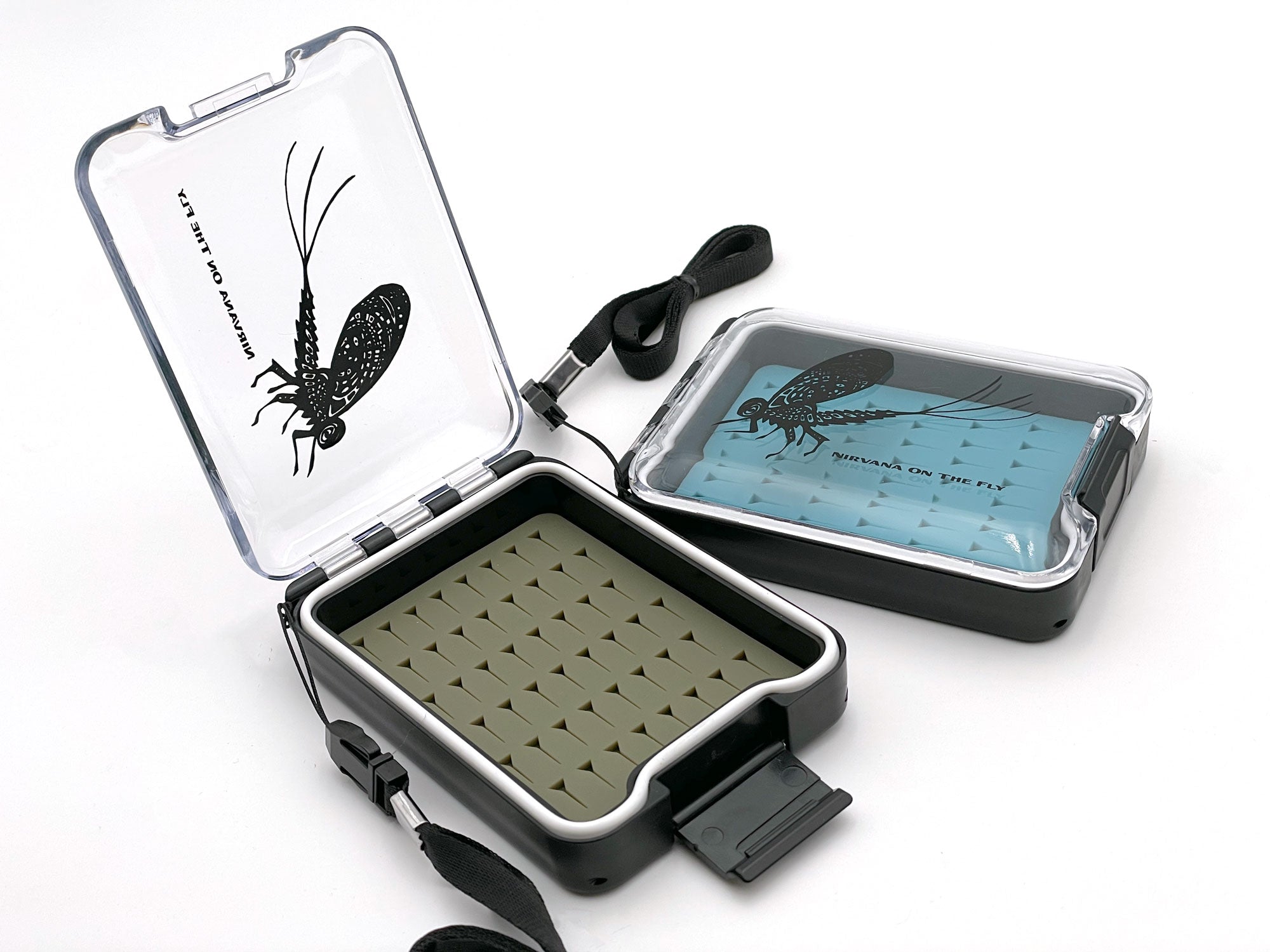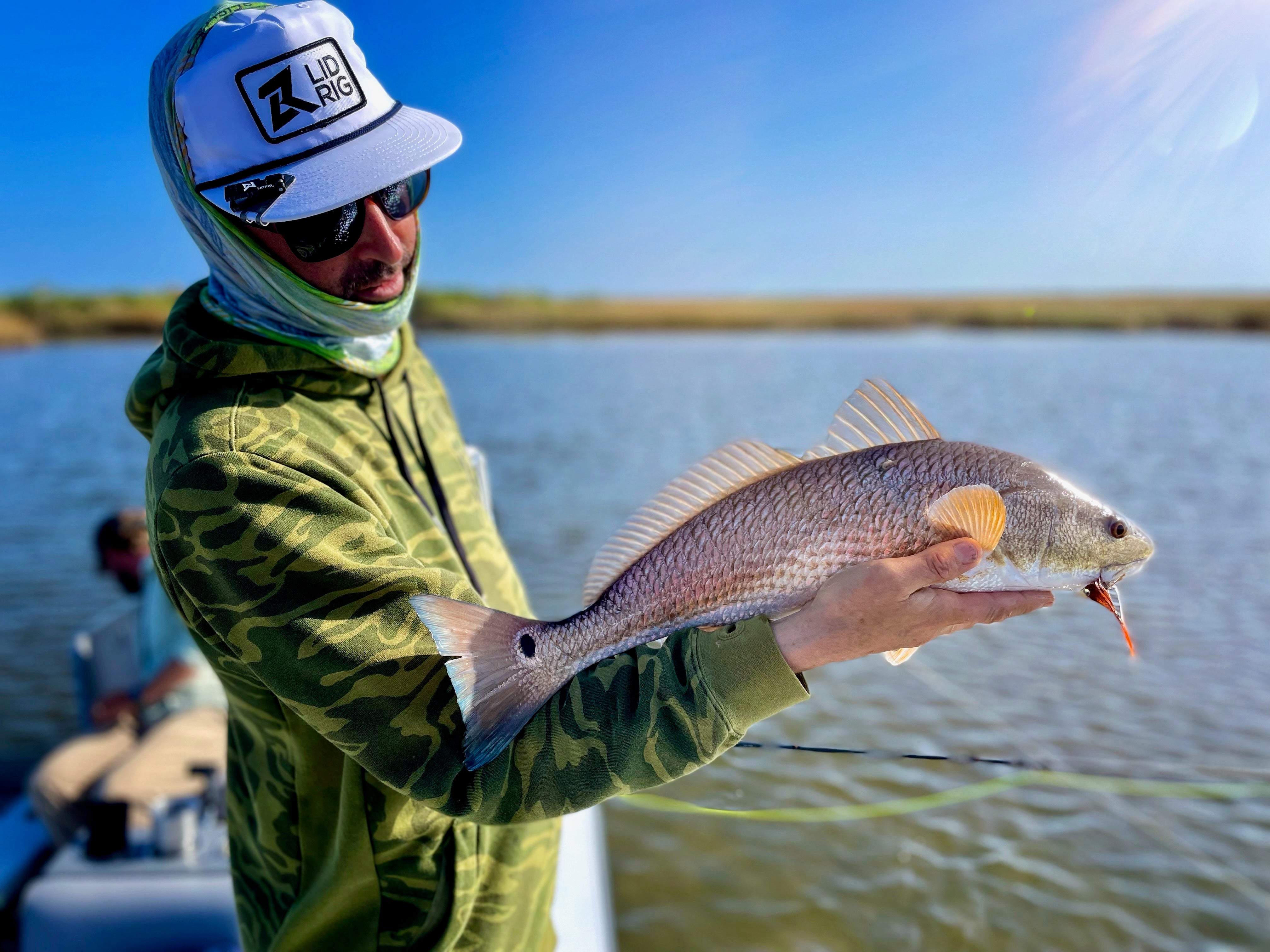From Novice to World-Class Fly Fisher: Devin Olsen's Journey
A summarization by the Fly Fishing Insider Podcast
The Fly Fishing Insider Podcast hosted a truly special guest, Devin Olsen, an author, father, and competitive fly fisher from Utah. For those who missed the podcast, we have compiled a summary capturing the essence of Devin Olsen's journey from a young enthusiast to a competitive world-class angler.
The Journey Begins
Devin Olsen is based in Springville, Utah, a town an hour south of Salt Lake City. His fly fishing journey began as a young boy practicing casting with his father. Though his first foray was deemed too early by his dad, Devin caught his first fish at age nine. By the age of 12, he was already a regular on the local streams, taking any chance he could get to hitch rides from parents or neighbors. He became even more involved when friends who were older got their driver’s license, making trips to the river a part of his weekly routine.
Stepping into Competitive Fly Fishing
Devin’s involvement in competitive fly fishing began at the age of 19. Inspired by a reality TV show called "Fly Fishing Masters," he decided to participate in the competition. Teaming up with a fellow angler from California, he entered his first competitive fly fishing event in Klamath Falls, Oregon. It was there he met Ryan Barnes and Lance Egan, who eventually played significant roles in shaping his competitive career. Both were already on Fly Fishing Team USA and got Devin interested in the Team USA competitions. In 2006, he entered his first Team USA regional and made his way up, eventually earning a place on the world championship team in 2009. Since then, he has been a constant presence on the team.
The Competitive Mindset
When asked about his early years in competitive angling, Devin reflected that he was a 20-year-old looking to see how good he could get. Now, at 35, he still carries that mindset. Devin emphasizes a growth mindset, always seeking to refine his skills and get better. According to him, the key to succeeding in competitive fly fishing is a robust foundational skill set acquired from years of passionate involvement in the sport. He warns against becoming a niche competitor, stressing the need for a broad understanding of various fly fishing methods.
Behind the Scenes at International Competitions
Devin shed light on what it’s like to compete internationally. The teams usually arrive about 5-7 days ahead of the competition to practice on representative water since the actual competition venues are off-limits. This period involves intense practice sessions and long hours spent tying flies, as often the flies prepared beforehand may not be precisely what is needed during the competition. Team members work late into the night, only to wake up early the next day and begin all over again. And although it might seem like a rugged lifestyle, Devin mentioned that they try to leave the accommodations as clean as they found them, given that they are representing their country.
Balancing Act & Future Prospects
Interestingly, Devin maintains a relatively simple approach to fly fishing. He is not one to assign deep meanings to things but sees every situation as an opportunity to grow and improve. For him, competitive fly fishing is an extension of this philosophy. Whether it's the world championships or another competitive pursuit, Devin seeks to continuously hone his skills, waiting eagerly for the next challenge.
So what's next for Devin Olsen? As of 2019, his last international competition was in Tasmania, with plans to compete in Finland disrupted by the global situation. However, his desire to improve hasn’t waned a bit. He continues to look ahead, not just to the next competition but to mastering the ever-evolving art of fly fishing.
By providing an in-depth look at his journey and sharing practical tips, Devin offers valuable insights into the world of competitive fly fishing. Whether you're a novice or a seasoned angler, there’s something to learn from Devin Olsen's experiences that can be applied to your fly fishing endeavors.
Let's try summarizing the insights from the podcast featuring Devin Olsen on fly fishing and his take on Pocket water, his background in fisheries biology, and his techniques.
Unlocking the Secrets of Pocket Water: Insights from Devin Olsen
Fly fishing has its own lore, techniques, and hidden gems. One of the most underrated aspects of the sport is what veteran angler and competitive fisherman Devin Olsen calls 'Pocket water.' In a deep dive into the subject, Olsen dispels some commonly held myths and offers invaluable insights.
The Overlooked Potential of Pocket Water
Pocket water is the part of the river that most anglers tend to ignore. According to Olsen, there are multiple reasons for this oversight. Firstly, wading through Pocket water demands physical effort and a bold spirit—two things many casual anglers lack. In a sport where many enthusiasts prefer to simply step out of their vehicles and onto the nearest riverbank, Pocket water is often dismissed for easier prospects.
Secondly, popular fishing techniques don't work well in Pocket water. Traditional rigs involving strike indicators and split shots aren't effective for getting the right drift in this kind of water. This limitation has led many to erroneously conclude that Pocket water is less abundant in fish.
Olsen's own experiences, augmented by his insights gained through fisheries biology, defy these notions. Electric fishing experiments have proven to him that Pocket water, even in shallow depths, can be teeming with fish. It's all about having the right strategy to catch them, which most anglers currently don't have.
Increase your odds of success with European Indicator Leaders


The Influence of Fisheries Biology
Olsen's academic background in fisheries biology doesn't just lend credibility to his fishing techniques; it also shapes his entire approach to the sport. He argues that his scientific background has made him a more methodical, less superstitious angler. Instead of relying on fishing folklore or pure instinct, he turns to evidence-based methods, using logical reasoning to understand why certain techniques work and others don't.
However, Olsen points out that his scientific approach is not foolproof. For example, although using a stomach pump to identify a fish’s diet can be informative, it is not a guarantee for success. In competitions, the tool may provide useful insights into the local fish diet, but often, the most successful fly is not an exact imitation of any local prey. Rather, impressionistic or attractor-based patterns still play a significant role.
The Utility and Limits of the Stomach Pump
One of the tools that Olsen occasionally utilizes, especially in unfamiliar waters, is the stomach pump. It allows him to determine what the fish are feeding on and adjust his flies accordingly. Despite its utility, he acknowledges the limitations of relying solely on stomach pump data. Fishing remains an unpredictable sport where no one tool or method can guarantee success.
In a recent experience, Olsen found that trout were feeding mostly on Daphnia, a type of plankton that's nearly impossible to imitate. Despite this, the fish were more attracted to hothead buggers, proving once again that fly fishing is a blend of science, experience, and a dash of the unpredictable.
Devin Olsen's insights into the world of fly fishing are a blend of hard science, years of experience, and a willingness to question established norms. His take on Pocket water challenges many preconceptions and opens up new vistas for anglers willing to step out of their comfort zones. Coupled with his methodical approach, influenced by a background in fisheries biology, Olsen offers a roadmap for both novices and veterans seeking to elevate their game in this timeless sport.
In an era where information overload can cloud judgment, Olsen's nuanced understanding serves as a compass, helping anglers navigate through the complexities of fly fishing with evidence-based strategies.
Fishing for All Seasons: A Comprehensive Look at Fly Fishing Tactics with Devin Olsen
Fly fishing enthusiasts can relate to the age-old debate on favorite fishing spots. The tranquility of still waters or the dynamic allure of rivers? But for angler Devin Olsen, the ideal location isn't set in stone; it's more about what jazzes him up in the moment. Here, we delve deep into Olsen’s flexible approach to fly fishing, his advice on cold weather fishing in rivers, and his invaluable tips to improve your drifts.
Seasonal Decisions: Stillwater vs. Moving Water
For Olsen, picking a favorite between still waters and rivers is as unpredictable as the weather. Literally. His preference swings depending on the season and even the condition of the waters. When still waters are in bad shape or out of season, his focus shifts entirely to rivers. On the flip side, if he's just enjoyed a day in the still waters and knows that the season for it is wrapping up, he'll prioritize getting his boat out on the water as often as possible. While rivers are available throughout the winter, still waters are generally off the table until late March or early April. So, in a way, Olsen tries to savor the uniqueness of each water body depending on its seasonality.
Winter River Fishing: More than Just Casting the Line
Winter river fishing can be a bit challenging, thanks to slow movements and potentially frustrating results. Olsen suggests that the key is not just to find fish but to focus on where they are more likely to be. His advice revolves around the metabolic rates of trout and how temperature affects their positioning in the water. He recommends identifying productive waters depending on the season, as temperature plays a significant role. During colder times, he often looks for deeper water to fish.
Methodology: How to Fish the Winter Rivers
According to Olsen, fishing in colder weather calls for a unique approach. While he primarily employs 'Euro nymphing,' a method involving a weighted fly on a thin, long leader, he also modifies it by employing a 'dry dropper' technique. He finds that this allows a better presentation in slow and steady winter waters. In the dry dropper technique, Olsen uses a floating 'dry' fly with a 'dropper,' or a second, usually smaller fly, attached to the hook. This helps him approach the water from a distance and get a better drift. He will initially use this rig and then switch to a deeper nymph set-up to "clean up" and catch any remaining fish.
Multi-step Fishing Process
Olsen's winter fishing often involves a three-step approach. After beginning with the dry dropper, he moves on to a deeper nymph rig and finally switches to streamers, large flies that imitate small fish. Olsen advises that the streamer should be your last option since its aggressive nature can often spook other fish in the vicinity, reducing your chances of catching more afterward.
Recognizing a Good Drift
Many anglers often find themselves asking, "How many casts should I make before switching methods?" According to Olsen, there's no fixed number; it's more about the quality of the drift. He emphasizes learning to recognize when you have a good drift, noting specific signs like speed changes and tension levels in the rig. When a drift looks like it did during a successful catch, you are on the right track. The ability to observe, recall, and adapt are crucial to mastering the art of a good drift.
To sum it up, Devin Olsen’s approach to fly fishing is rooted in adaptability, understanding of fish behavior, and a keen observation skill set. Whether you're contemplating still waters or the ever-changing rhythms of a river, Olsen’s insights offer a rich guide to enhancing your fly fishing experience, no matter the season.
The Art of Sight Fishing: Insights from Fly Fishing Insider Podcast with Devin Olsen
Sight fishing is a term that gets thrown around a lot in the fly fishing community, but do we truly understand its intricacies? Recently, Devin Olsen, an expert angler and author of "Tactical Fly Fishing," sat down with the Fly Fishing Insider Podcast to share his knowledge on this technique. The conversation shed light on why sight fishing is more than just looking for fish in the water—it's a skill that involves knowledge, patience, and acute observational ability.
If you are enjoying this article you should read Lance Egan's article on modern style nymphing.
Why Sight Fishing Matters
The first mistake many anglers make is not even attempting to look for fish while on the water. Olsen emphasizes the importance of spotting fish before you cast your line. This skill becomes even more crucial in winter when fish are generally found deeper in the waters. Olsen argues that spotting fish is a lot easier if you make a concerted effort to look for them, regardless of the type of water you're fishing in.
How Experience and Effort Play a Role
Olsen believes that the skill of sight fishing doesn’t come overnight; it is honed through experience and concerted effort. He noticed that many people, even when out fishing, don’t really make an effort to look for fish. This is a significant mistake, as making that effort can drastically improve your ability to spot fish. According to Olsen, your success in sight fishing is dependent on practice and the time spent observing water conditions.
The Importance of River Clarity
According to Olsen, one of the most critical elements for successful sight fishing is the clarity of the water. If you're fortunate enough to live somewhere with clear rivers, you have a great opportunity to improve your sight fishing skills. He suggests paying close attention to the color of the water and identifying when it looks slightly different from what it should. This could be an indication of fish presence.
Understanding the Subtleties of Fish Color
Olsen adds another layer to the art of sight fishing by talking about the importance of recognizing the specific color of the fish species you're targeting. In New Zealand, for example, brown trout have a unique greenish tint to their backs, which is different from the browns found in other rivers. This means you should be looking for a green hue in New Zealand waters but an orange hue in other regions.
Spotting Movement and Shape
Besides color, movement is another essential aspect of sight fishing. The trick is to see if there's something in the water that moves like a fish, even if you can't fully make out its shape. Sometimes, it could be a log or a weed, but other times, it's indeed a fish, and being able to make that distinction comes with experience.
Practical Tips for Up-River Movement
When moving up a river, pay attention to the water around your feet to avoid spooking fish that may be right in front of you. Olsen suggests that if you notice a fish spooking out of an unexpected place, stop and observe similar spots as you proceed. It might just be that you find more fish in similar conditions ahead.
It’s All About Observation
The critical thing to remember is that sight fishing is largely about observation. Whether you're new to the scene or a seasoned angler, the trick is to keep looking for those giveaways—the slight difference in watercolor, the subtle movement, or the shape that looks "fishy." According to Olsen, even the sun angle can make a significant difference in your ability to spot fish, so always be aware of your environment.
Summing it Up
So, what did we learn from Devin Olsen’s chat on the Fly Fishing Insider Podcast? Sight fishing is a nuanced skill developed through experience and effort. Factors like water clarity, fish color, and movement are crucial for spotting fish effectively. Most importantly, don’t forget to observe carefully, especially when wading up the river.
Whether you're new to sight fishing or looking to up your game, Devin Olsen's insights offer a treasure trove of information that can significantly improve your sight fishing skills. His book, "Tactical Fly Fishing," and his online fly fishing shop, Tactical Fly Fisher, offer further resources for those eager to dive deeper into the art and science of fly fishing.
By taking these tips to heart, you're not just fishing; you're mastering an art form that combines keen observation with the thrill of the catch. So the next time you're out on the water, remember: it's not just about the fishing, it's about seeing the water in a whole new light.
Want to get deals on gear, fly fishing trips, and tons of information? Become a member of the Loyalty Club at Fly Fishing Insider Podcast. Join Now

By Christian Bacasa
Host of the Fly Fishing Insider Podcast
Fly Fishing Insider Podcast Official Website
Instagram Fly Fishing Insider Podcast
Instagram Dupeafish
Facebook
Pinterest
Twitter
LinkedIn
Tumblr


